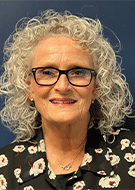Radiology Technologists are in High Demand And Short Supply
Health care organizations are using temporary staffing and other strategies aimed at finding and retaining employees


A recent survey from the American Society of Radiologic Technologists (ASRT) found a radiology technologist vacancy rate of 18.1%, a dramatic increase from 6.2% only three years ago.
The shortage is having a significant impact on radiology practices and on patients’ wait time to schedule and undergo imaging.
For inpatients, increased wait times can lead to delayed discharges and longer hospital stays.
“Delays in initial screenings cause delays in follow-up care, such as additional imaging, biopsies and consultations with specialists,” said Yan Chen, PhD, professor of digital screening at University of Nottingham’s School of Medicine in Nottingham, England. “This can negatively affect patient outcomes, especially if cancer progresses during the waiting period.”
The lower staffing levels are significantly impacting cancer screening, especially in breast and lung cancer, she said.
Retirement, Education Disruption and Lifestyle Choices Affect Availability
The shortage of radiology technologists has been caused, in part, by the retirement of older radiology technologists, noted Prof. Chen.
In addition, although the United Kingdom has several strong technologist training programs, the COVID-19 pandemic led to disruptions in clinical placements for students, Prof. Chen said, limiting the availability of placements and reducing the number of practical learning opportunities.
“Some students experienced delays in completing their training and graduation due to interruptions in their education caused by pandemic-related restrictions and adjustments,” she said. “Though we are several years out from the pandemic, some students are still struggling to complete their education.”
According to Nancy Godby, MS-MHA, MA, RT(R)(M) ARRT, CHC, director of radiology at Cabell Huntington Hospital in Huntington, WV, there are two large training programs in the area offering four-year bachelor’s degrees in CT, MR and US. However, once their degrees are in hand, many students are choosing to leave the area.
“Many of these graduates are using their skills in sub-specialty areas, such as radiation therapy, or opt to live in another area,” Godby said. “This combination has led to a lack of general technologists who can fill the open positions and assist with the backlog of patient imaging orders.”
To fill these positions, many organizations are using temporary staffing agencies.
“We have had agency staffing for more than two years,” Godby said. “We are a 24/7/365 staffed Level II Trauma Center and receive transfers from our tri-state region, so we must have radiologic technologists ready to work.”
Godby’s institution uses agency CT technologists and is now building the in-house MRI team with recent graduates.
Finding Other Solutions and Developing Retention Strategies
In addition to using agency staffing, Godby’s institution has begun to hire radiology student technologists as externs.
“This is helping us identify candidates early and retain them post-graduation,” she said. “We are in a licensure state, so there is a limit to what they can do. Having them with us their last year before graduation gives them a head start in becoming a valuable member of our full-time staff.”
She has also been working with the leadership of a local community college to create a radiology technologist associate degree program.
Another potential way to address the shortage is to use AI, according to Prof. Chen.
“AI can help address both the immediate need for more technologists and the long-term sustainability of the workforce,” Prof. Chen noted. “Implementing AI to assist with image analysis and streamline workflows allows radiology technologists to focus on more complex tasks, while using automation for administrative duties reduces their burden.”
New approaches to technologist training and recruitment may also help increase the pipeline of qualified technologists, she noted.
“These include apprenticeship programs, where trainees work with experienced professionals, gaining hands-on experience, and programs designed to assist individuals re-entering the workforce,” Prof. Chen said. “In the U.K., we provide those trainees a structured approach to quality assurance through the PERFORMS scheme, which is the leading educational self-assessment and training scheme for breast screening readers in the UK. It allows technologists to assess and maintain the accuracy and reliability of their imaging processes in the context of evolving technologies.”
For More Information
Read previous RSNA News stories on the radiologist shortage:
- Radiology Facing a Global Shortage
- International Radiology Societies Tackle Radiologist Shortage
- Radiologist Shortage in the U.K. Continues to Deepen